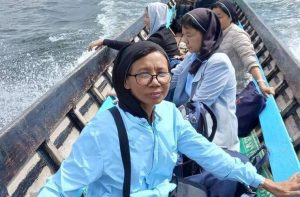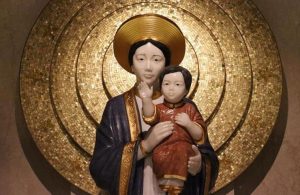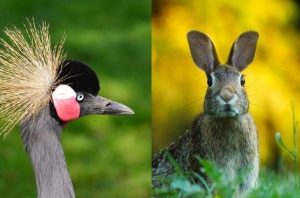The Lokoya people are situated in Eastern Equatoria in the Southern Sudan. They are estimated to be around thirty thousand people. The economic activities of the community are carried out in accordance with the season of the year. They have four seasons, dry season, wet season, mid-rainy season and harvest season.
The Lokoya way of life is vigorously organised during the dry season. At the end of the harvest, the chief priest of ‘grain and mountain’ lifts the order which bans people from fighting or yelling. By this, people in the village are free to make ululation, yell and dance. The girls and boys sing about their colleagues regarding laziness, quarrelling, dirty habits, impoliteness, prostitution, theft, cowardice, bravery, ugliness, beauty and many other issues.
In the dry season, both men and women perform a lot of activities. The men build huts or go hunting while blacksmiths make hoes, knives and arrows, and some go trading. When the men build huts, the women cut the grass for thatching. The men bring poles, bamboo and strings for tying the grass. When all the building materials have been gathered, the husband asks his relatives or fellow neighbours to come and help him. On the agreed day, the wife brews local beer and makes food. Some men tie the grass, others throw the grass on to the top of the hut, while those who have climbed up thatch the hut. During the break, they get together to drink the beer and eat the food.
After being entertained, they return to finish the thatching. The plastering of the hut is also a joint job. The grown up children mix the mud, women and men carry the mud while the rest plaster it on the wall. During the dry season, some of the small-scale work carried out by the blacksmith involves making hoes, spears, arrows, shields, knives and fishing nets. They sell these items to the young men who use hoes for cultivation, spears, bows and arrows for hunting, shields for fighting, knives for cutting the meat of the animals and nets for fishing.
The men do goat and sheep skin-tanning. The women make baskets, pots and earthen-ware. They go to the bush to collect fire-wood, wild fruits and green vegetables. The children have no formal education as such, but learn through traditional education. Their syllabus consists of practical singing, hearing legends and fairy tales from elders.
The children are taught to identify their father’s goats by colours and indenting or specially cutting the ears of the goats. When an age group has learnt the songs, each camp dances and other camps join in too. The girls, in important dances, dress with ornaments: beads on their necks and waist, earrings on their ears, bangles made of ivory on their arms and copper bangles on their legs as well. They tie small bells on their ankles. They also carry beautifully decorated sticks for dancing. The young men dress in head gear with feathers on it. They put specially made feathers called ‘etamu‘ on the head gear. The body is decorated with ochre, and beads are worn across the breast. They also tie small bells on their ankles and they too carry beautifully decorated sticks for dancing. The dance goes on for a long time.
The Lokoya carry out communal farming on invitation. In return, some entertainment is provided. The chief of the soil authorises the cultivation. All the people till the fields. The work is divided mainly between women and men. The women’s job is to gather the dug out grass, throw it at the border of the fields and set it on fire. While the men are digging, women prepare food to be taken to the men working in the fields. They provide water and sometimes beer to restore their strength. As the wet season begins, the men begin to prepare the fields. With the fall of the first rain, they sow the seeds. When the grain has grown up to one foot, the chief of the soil gives the green light for the people to work by performing a ceremony.
Weeding is the work of women. They clear the weeds at least twice in the season. This will allow the grain to grow healthier. The groundnuts are weeded before flowering. If the fields are large, one woman cannot complete its weeding within the required period, so there is often co-operative work. This is done by asking sisters or women of the same camp to come and help to weed or dig. Normally, beer and food is made for their entertainment. Harvesting is done at the beginning of the harvesting season.
Everybody, grown-up children, women and men, take part in harvesting the groundnuts. The men dig up the groundnuts and children carry them to girls and women sitting under a tree. They collect the groundnuts from the stalks. The finished groundnuts are carried to the houses. Similarly, the men and women help in carrying home the the grain.
Throughout the year, the chief of the mountain provides health services. He banishes disease by smearing oil on the chest of the sick person. When a disease or death strikes a family, an ancestral ceremony is held and prayers are offered on the family altar or shrine. Ordinarily, this is not an organised form of prayers. The people believe in one god called ‘Ojok’, the creator of Heaven and Earth and everything in it, but they pray to ‘Ojok’-‘Lamolo’ through ancestral spirits to worship him. A goat is killed and the contents of its stomach are mixed with water, saliva is spat on the mixture and the head of the family, usually the eldest member, sprinkles the mixture on the family members and homestead.






